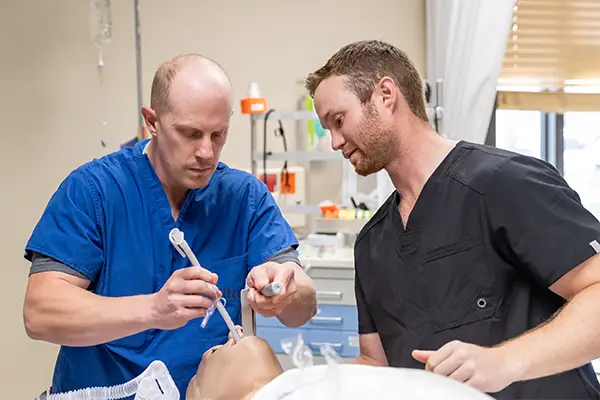
North Dakota Nursing Research Collaborative
NDNRC provides a transformative approach to nursing in North Dakota, uniting academic, clinical, and organizational partners to advance research, inform policy change, and enhance healthcare outcomes.
In 2023, the College and University Nursing Education Administrators (CUNEA), the North Dakota Organization of Nursing Leaders (NDONL) and UND recognized a need to bring North Dakota nursing clinical and academic partners together to create a more unified nursing voice in North Dakota. Thus, the University of North Dakota (UND) initiated the North Dakota Nursing Research Collaborative (NDNRC).
Research & Projects
Simulation in Nursing Education within North Dakota
The NDNRC released its inaugural study in February 2024, focusing on the integration of simulation in nursing education within ND.
Nursing simulation provides opportunities for students to advance their hands-on skills, practice solving critical situations, and receive constructive feedback in a supportive learning environment. It has been a crucial part of ND nursing education since 2005. Simulation has become increasingly vital due to the limited nursing student clinical placement sites and availability across the state. Current evidence demonstrates that simulation can replace up to 50% of clinical hours while retaining both excellent educational and practice outcomes.

Workforce Retention
The NDNRC is working on a study of nursing workforce retention across the state. Among the goals for these projects are to provide evidence and information to support beneficial policies for nursing in North Dakota.
About the NDNRC
Vision Statement
A state and region where clinical nursing education of excellence is the standard; nurses are afforded high-quality, supportive practice environments; nursing research is rapidly translated into practice; and the collective voice of nurses is thoroughly represented.
Mission Statement
A diverse group of nurse researchers, expert clinicians, and nursing leaders working synergistically to conduct interprofessional research with the aims of demonstrating the value of the nursing workforce while improving healthcare outcomes.
Objectives
The NDNRC strives to:
- Bring together academic, clinical, and organizational partners.
- Develop integrated research teams across the state/region.
- Identify areas of nursing research need for the state and areas of interest to NDNRC membership.
- Combine resources of members for optimal research project design, implementation, outcomes, and funding.
- Conduct collaborative research to enhance nursing outcomes.
